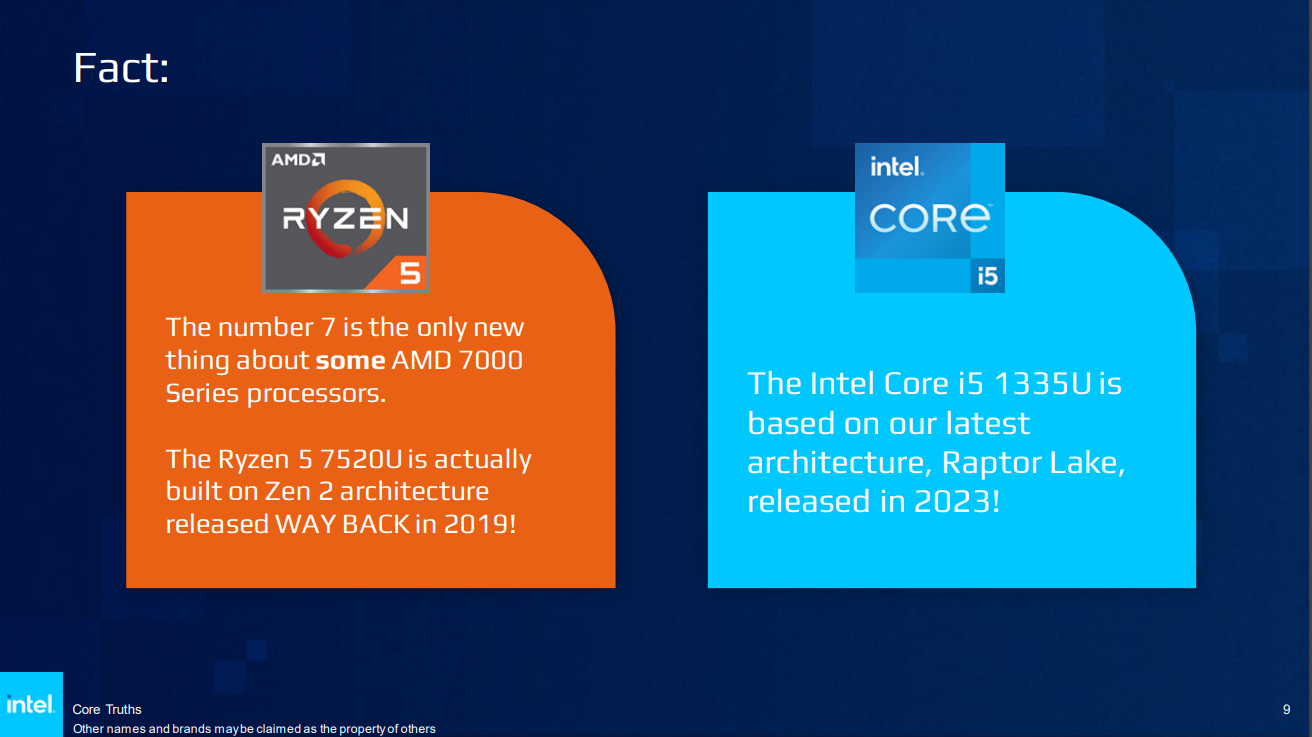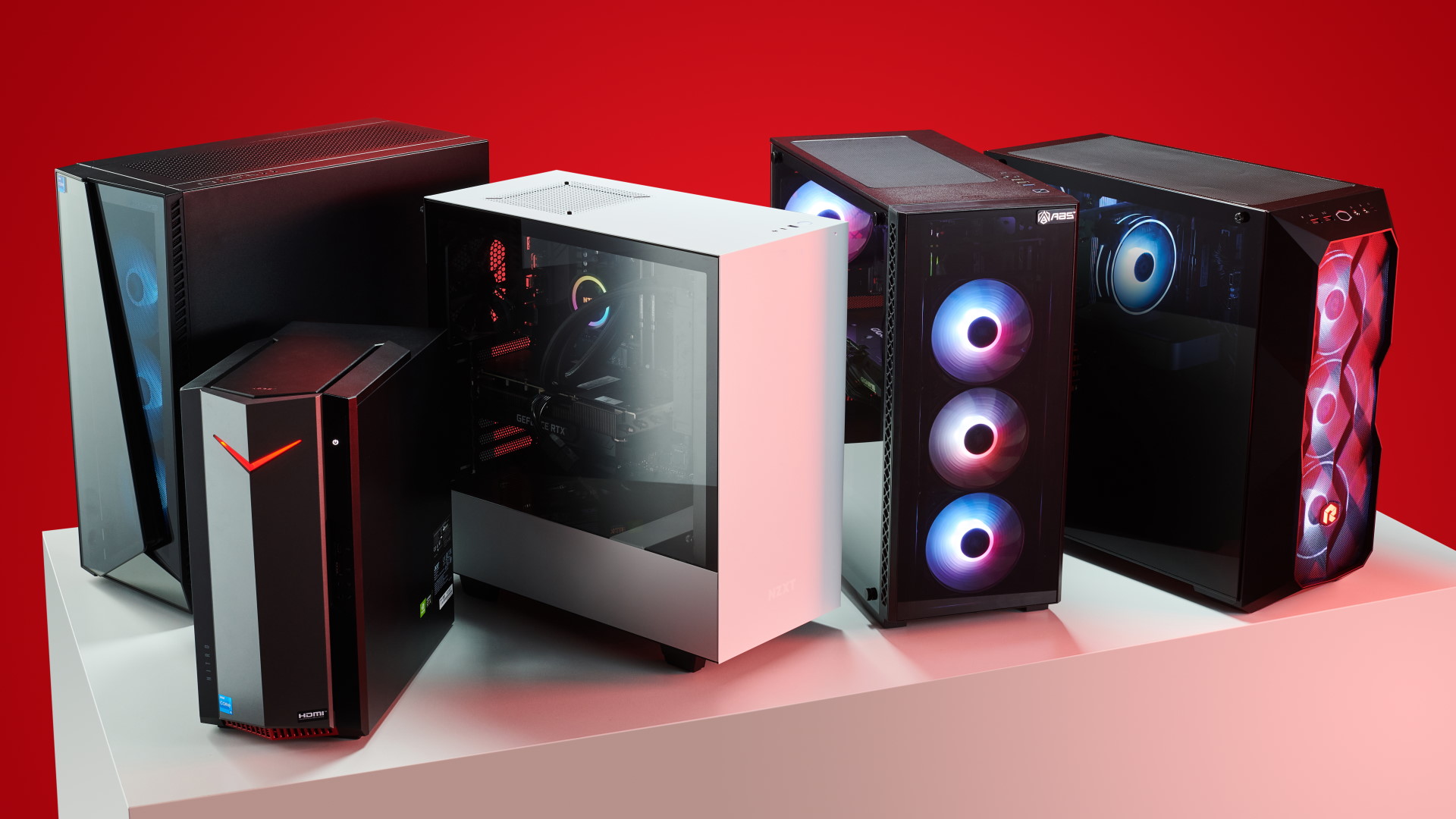Intel posts blatantly hypocritical marketing attack on AMD and then takes it straight down
Intel accuses AMD of selling old chips as new.

Intel has revealed the truth about AMD's latest Ryzen 7000 mobile CPU family. Some models actually use old CPU designs with Zen 2 architecture, which dates back to 2019.
Shocking, isn't it? Except Intel's own 14th Gen desktop CPUs are, of course, based on the same Raptor Lake architecture as its 13th Gen CPUs. Which are, of course, only a very tiny tweak of its 12th Gen Alder Lake architecture.
And all that is before we get into Intel's infamous 14nm Skylake architecture, which came out in 2015 and was then rebadged as Kaby Lake in 2017. Oh, and rebadged again as Coffee Lake. Skylake wasn't truly replaced on the desktop until 2021, by which point it had been sold as 6th Gen, 7th Gen, 8th Gen, 9th Gen, and finally 10th Gen. Nice!
Intel's latest marketing ruse, a post on its website brazenly titled "Core Truths", likening AMD to not only a used car dealer but also a snake oil salesman, and now rather aptly leading to an error page reading "Oops, something went wrong", was spotted by both Tom's Hardware and Gamer's Nexus. Not terribly surprisingly, it's already been taken down.
Specifically, Intel's beef was with the AMD Ryzen 5 7520U chip, which is based on the Zen 2 CPU architecture. AMD's most recent CPU design is two architectures hence in Zen 4.

Arguably to AMD's credit, it does actually flag the CPU architecture generation in the product naming of its mobile chips. The third digit in AMD's CPU numbering scheme refers to the Zen generation, hence the "2" in 7520U or the "4" in the 7640U, which does indeed use the Zen 4 architecture.
With Intel's CPUs based on old architectures, there is never any way of telling from the model name. So, that the desktop chip you were buying in 2020 that used the same architecture as the 2015 chips? It was called 10th Gen to the original Skylake's 6th Gen. Hilarious.
Keep up to date with the most important stories and the best deals, as picked by the PC Gamer team.

What's more, even the veracity of the information Intel posted in the trash-talking document is questionable. On a slide emphasising that the Ryzen 5 7520U uses technology dating back to 2019, it describes its own Intel Core i5 1335U as being "based on latest architecture, Raptor Lake, released in 2023!".
Raptor Lake, of course, was not a new architecture. It's almost entirely the same as Alder Lake from 2021, bar a bit of extra cache and some extra E cores. The actual "architecture", which is the word Intel chose to use, was carried over with absolutely no changes.

Best gaming PC: The top pre-built machines.
Best gaming laptop: Great devices for mobile gaming.
The bottom line is that AMD clearly is guilty of sticking some old CPUs into its current 7000 series mobile CPU line up. But it's peanuts compared to the years and years of wholesale product line rehashing Intel got up to over the period where its transition from 14nm to 10nm was much delayed and has repeated with its most recent Raptor Lake Refresh 14th Gen desktop CPUs.
Of course, Intel has since rebranded its 10nm node to Intel 7 to make that look newer than it really is, so in terms of legs to stand on, Intel barely looks like a unidexter, let alone being in a position casually saunter along criticising AMD.
All told, this is exactly the sort of nonsense you'd hope not to see under the leadership of CEO Pat Gelsinger, who has always come across as a straight shooter. Old habits die hard, but perhaps the fact the post was quickly removed is indicative that the culture is changing and at least somebody at Intel has a functioning hypocrisy detector.
We have, of course, reached out to Intel for comment, but were told that "we don't have anything we can comment on now."

Jeremy has been writing about technology and PCs since the 90nm Netburst era (Google it!) and enjoys nothing more than a serious dissertation on the finer points of monitor input lag and overshoot followed by a forensic examination of advanced lithography. Or maybe he just likes machines that go “ping!” He also has a thing for tennis and cars.

